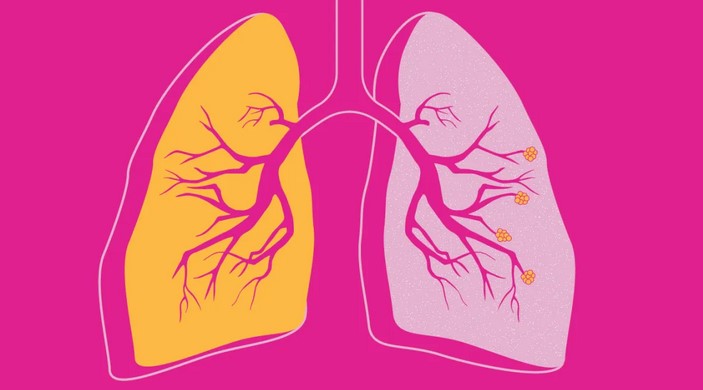
Chronic Obstructive Pulmonary Disease (COPD) is a progressive lung disease that affects millions of people worldwide. It is characterized by a gradual decline in lung function, leading to difficulty breathing and other symptoms. The copd gold stages are a way of classifying the severity of COPD, based on the amount of airflow obstruction and other factors. Understanding the progression of COPD is important for both patients and healthcare providers, as it can help guide treatment decisions and provide insight into the long-term outlook. This article will provide an overview of the copd gold stages and discuss how they can be used to better understand the progression of COPD.
Exploring the Different COPD Gold Stages: What You Need to Know
Chronic Obstructive Pulmonary Disease (COPD) is a progressive lung disease that affects millions of people worldwide. It is characterized by difficulty breathing, coughing, and other respiratory symptoms. To help diagnose and treat COPD, the Global Initiative for Chronic Obstructive Lung Disease (GOLD) has developed a system of four stages to classify the severity of the disease. Understanding the different stages of COPD can help you better manage your condition and improve your quality of life.
Stage 1: Mild COPD
Stage 1 COPD is the mildest form of the disease. People with Stage 1 COPD may experience shortness of breath during physical activity, but their symptoms are generally mild and do not interfere with daily activities. People with Stage 1 COPD may also have a mild cough and some wheezing.
Stage 2: Moderate COPD
Stage 2 COPD is more severe than Stage 1. People with Stage 2 COPD may experience shortness of breath even when at rest, and their symptoms may interfere with daily activities. They may also have a persistent cough and more frequent wheezing.
Stage 3: Severe COPD
Stage 3 COPD is the most severe form of the disease. People with Stage 3 COPD may experience shortness of breath even when at rest, and their symptoms may be severe enough to interfere with daily activities. They may also have a persistent cough and frequent wheezing.
Stage 4: Very Severe COPD
Stage 4 COPD is the most severe form of the disease. People with Stage 4 COPD may experience shortness of breath even when at rest, and their symptoms may be so severe that they are unable to perform daily activities. They may also have a persistent cough and frequent wheezing.
It is important to note that the stages of COPD are not set in stone. As the disease progresses, a person’s symptoms may worsen or improve, and they may move up or down in stages. It is important to work with your doctor to monitor your condition and adjust your treatment plan accordingly.
By understanding the different stages of COPD, you can better manage your condition and improve your quality of life. If you have been diagnosed with COPD, talk to your doctor about the best treatment plan for you.
Managing COPD: How to Navigate the Different Gold Stages of the Disease
COPD, or Chronic Obstructive Pulmonary Disease, is a progressive lung disease that affects millions of people around the world. It is characterized by difficulty breathing, coughing, and other respiratory symptoms. The disease is divided into four stages, known as the GOLD stages, which are based on the severity of the disease. Understanding the different GOLD stages of COPD can help you better manage your condition and improve your quality of life.
The first stage of COPD is known as GOLD 1. This stage is characterized by mild symptoms, such as occasional shortness of breath and a mild cough. People in this stage may not experience any significant limitations in their daily activities.
The second stage of COPD is known as GOLD 2. This stage is characterized by more frequent and severe symptoms, such as shortness of breath and a persistent cough. People in this stage may experience some limitations in their daily activities, such as difficulty walking or climbing stairs.
The third stage of COPD is known as GOLD 3. This stage is characterized by very severe symptoms, such as shortness of breath even when resting and a persistent cough. People in this stage may experience significant limitations in their daily activities, such as difficulty performing basic tasks like getting dressed or taking a shower.
The fourth and final stage of COPD is known as GOLD 4. This stage is characterized by very severe symptoms, such as shortness of breath even when resting and a persistent cough. People in this stage may experience extreme limitations in their daily activities, such as difficulty performing basic tasks like getting dressed or taking a shower.
Managing COPD can be challenging, but understanding the different GOLD stages of the disease can help you better manage your condition and improve your quality of life. Talk to your doctor about the best treatment options for your specific stage of COPD. With the right treatment plan, you can manage your COPD and live a full and active life.
Conclusion
In conclusion, copd gold stages provide a useful framework for understanding the progression of chronic lung disease. By understanding the different stages of COPD, healthcare providers can better assess the severity of the disease and provide appropriate treatment. Additionally, patients can use this information to better understand their condition and take steps to manage their symptoms and slow the progression of the disease.